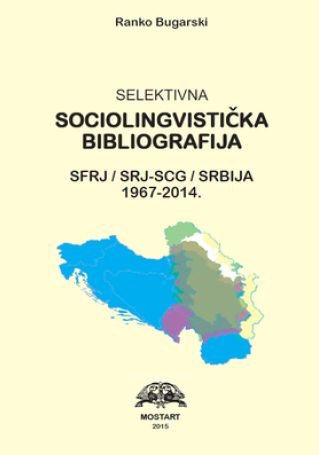
We kindly inform you that, as long as the subject affiliation of our 300.000+ articles is in progress, you might get unsufficient or no results on your third level or second level search. In this case, please broaden your search criteria.


Language and Identity consists of essays entitled ”Language and Identity”, ”Ours and Alien in Language”, ”Protecting Minority Languages and Applied Linguistics”, ”An outline of a Professional Autobiography”, ”An Experiment in writing a Linguistic Memoir”, ”A few more Slang and Amalgamated Expressions”, and ”Selected Bibliography of Sociolinguistics for 2009 – 2010”.
More...
Besides the editors, Predrag Piper and Milorad Radovanović, this collection of sholarly articles also fetures: Dragoljub Petrovic, Zuzana Topolinjska, Sasmina Grković-Major, Aleksandar Mladenović, Darinka Gortan-Premk, Rajna Dragićević, Sofija Miloradović and Milena Marković. The editors write in their preface: ”There are bodies of sholarly work so diverse and multi-faceted that they can hardly be grasped by a single person, so large that they can hardly be graded by a single hand, but whose overall significance would nevertheless remain insufficiently visible and rcognized if no attempt were made to introduce them, at least competently and in general features, in a single place. The open schoarly and scientific opus of Milka Ivić belongs among such bodies of sholarship. In this book, her own collaborators, almost all of whom were, at one time or another, her students, write about directions, outcomes, and echoes of her researches… In addition to being motivated by sholarly needs, this book is also en expression of gratitude, love, and respect felt by disciples, collaborators, and friends of the Serbian Academy of Science and Arts member, Milka Ivić.
More...
“The work is novel, original and pioneering not only in terms of its narrowly understood subject matter (a study of languages and identities in the Lubusz region) but likewise in wider terms as a sincere, aeideological look at so-called new mixed dialects in so-called Western and Northern Territories” (Professor Bogdan Walczak). “In her studies on language contact in the borderlands, Anna Zielińska has developed her own original methodology, combining elements of sociolinguistics, dialectology and cultural studies. In the monograph she present a comprehensive description of ways of communication actually at play in multilingual territories with diverse immigrant populations and a multifaceted hierarchy of languages and their varieties. Approach of this kind has hitherto not been applied to the Lubusz region, with existing studies usually attempting to model an ideal state of integrated Polish” (Professor Ewa Wolnicz-Pawłowska). “Anna Zielińska’s book deconstructs the stereotypes which have accrued in Poland about the so-called Recovered Territories due to the political and ideological conditions of the last half century. This study, brilliantly underpinned in terms of material and theory, is a pioneering combination of classic sociolinguistic approach with an anthropological perspective which inspires deliberations about the nationalistic mechanisms in Polish scholarly discourse concerning this area” (Professor Anna Engelking).
More...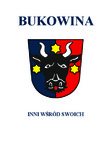
"The book tackles the continuously topical and important subject matter of the setting of social boundaries and the diversity of the social world, of migration and the associated sense of separateness and alienation but also community building despite [...] the everyday experience of difference". The texts comprising this volume will allow for a better understanding of "the phenomenon of the borderland in its various aspects (linguistic, cultural, societal, political) on the part of members of the scientific community and of social practitioners (politicians and activists). Particular texts might also prove useful in the educational process at different levels and in different fields - and in different Central European countries" (from review by Professor Lech Suchomłynow).
More...
The book contains a Foreword and 12 chapters based on studies published between 2009 and 2016. Their common denominator is the question of language problems from various aspects, the most important being the linguistic, the language ideological, the interventional and the general problem-managing aspect.The chapters are organized into four main topics. The first has the title Language Management and is an introduction into the world of language problems. It provides theoretical foundations for the question of language problems and language ideologies utilizing the Theory of Language Management. The second topic is entitled Types of Language Problems and is devoted to the language problems themselves. The main aim of their categorization is to enable the separation of the specific features of individual language problems from the features common to a whole group of language problems. This should enable both to get to know these problems better and to find the best ways of managing them. The third topic has the title The Ways of Managing Language Problems. It analyses the ways of dealing with various types of language problems including problems of proper names and problems concerning language standardization. The fourth topic is entitled Language Problems of the Hungarian Speech Community in Slovakia. It gives an overview of the most important language problems daily faced by the Hungarian minority community in Slovakia.
More...
The book on linguistics contains sixteen studies. The writings presenting the results of predominantly empirical research can be related to four research topics. The first theme is language policy, the content of which provides lessons not only for linguists, but also for those dealing with legal regulations of multilingual societies in general, including the majority–minority linguistic coexistence in Slovakia, and the contexts of taking advantage of the existing language rights. A further part of the studies deals with linguistic topics that attest to the specific reflection of linguistic relations in the linguistic system and induce a theoretical study of linguistics. The next research topic closely related to the previous one, is the presentation of the spelling level of Hungarian writing practice in Slovakia from different aspects. The fourth series of studies of the volume deals with the general problems of Hungarian-language education in Slovakia and with the specific problems of teaching Hungarian as a mother tongue in a minority status.
More...
Istria is a multicultural region with very significant population, which puts a strong emphasis on their regional identity. At the official level, Istria is a bilingual region (Croatian – Italian), but multilingualism is a distinctive feature of its everyday reality. Based on qualitative ethnographic data, the paper explores the degree to which the local Istrian varieties, code-switching, and receptive multilingualism carry symbolic value for their speakers and play a crucial role in the formation and preservation of the authentic regional identity. Based on the results of the research, the paper re-examines the aim and applicability of the European Charter for Regional or Minority Languages.
More...
The eight volume of the series The richness of the Polish language in the light of its history is a publication that presents the achievements of the national scientific conference (Katowice, 7 November 2018). The authors of the articles collected in this volume have made various historical and linguistic issues, primarily: description of old and contemporary lexis oriented in terms of vocabulary, semantics or etymology; the problems of nominations in the history of the Polish language; conceptualisation of different concepts in both language and culture. Due to the diversity of thematic circles this book was divided into three parts (From history to modernity – continuity, change, inspirations; From word to meaning - etymology, transformations, variants; From sign to text - syntax, genres, functions), showing a wide spectrum of scientific interests of the researchers.
More...
This study is an analysis at the crossroads of axiolinguistics and media linguistics which presents axiological correlations between the concept RUSSIAN ORTHODOX CHURCH and the concepts FAMILY, TRADITION and PATRIOTISM. The research material is a corpus of over 400 texts published in the portal www.rg.ru between 2011 and 2020. The analysis indicates a close relationship between the concepts under scrutiny. The anthropomorphisation of the RUSSIAN ORTHODOX CHURCH contributes to its perception through the prism of the FAMILY, primarily in the psychosocial and axiological aspects. What is of key importance in the case of both of these concepts is interpersonal relationships – care, and above all: love, perceived not only as the highest value, but also a condition of humanity and true happiness. The relationship between the RUSSIAN ORTHODOX CHURCH and TRADITION, in turn, is essentially based on the category of duration, which is fundamental to social self-identification. TRADITION is perceived as the sum of the secular and the religious dimensions, since the history of the Russian Orthodox Church is inextricably linked with the history of statehood, both in material and spiritual terms. The common elements of the concepts RUSSIAN ORTHODOX CHURCH and PATRIOTISM are love for the motherland and readiness to defend it. The categories of memory and duration in time are also important.This work was financed from a subvention for maintaining and developing the research potential of the Institute of Slavic Studies, Polish Academy of Sciences.
More...
The epoch in which we live is also full of communicatively difficult situations, resulting from the pace of civilisational changes, cultural and social conflicts, growing divides related to opening to the Other, with whom we are not always prepared to meet. The works and studies compiled in the present book are divided into four parts and the problems described in them focus on many communicative situations and social phenomena. The authors point the language spheres, but also many different contexts of using the natural code, such as politics, racism, gender, sexual orientation, religion, sport, disease and national or cultural difference.
More...
The book Approaching Language is a selection of articles or parts of articles of the author written during his research and teaching work, and in which,sometimes in a great amount, was reported something new, unknown in the Bosnian-Herzegovinian linguistic science until they appeared, whether we consider language as a structural creation, or if we consider it as a social phenomenon.The introductory text – the interview, In the Defense of the Scientific Approach to Language problems, which gives an insight to the author’s relation toward the facts and questions which he clarifies, is first followed by the articles in which the language structure is explained, in the basis of the organic idioms of the štokavian dialect, but of the standard Croatian-Serbian language as well, its nature and norm before the dissolution on separate standard languages: Bosnian, Montenegrian, Croatian and Serbian,then by the texts with theoretical characteristics, dedicated to the questions of language planning and functioning of the standard language in nationally non-homogeneous communities.The problems of organic idioms are very present in this book. Seven works are dedicated to this issue, five of which are related to the most archaicorganic idiom in Bosnia and Herzegovina – the subdialect of the natives in Bosnian Posavina. The first of them, A Contribution to the Problems of the Posavian Ikavian Dialect in Bosnian Posavina, is important because it completed the gap that remained after the monograph of S. Ivić Today’s Posavian Subdialect.This article precisely determines where the southern border of that subdialectin Bosnia and Herzegovina is, and all the villages with the Croatian population that belong to that subdialect are enumerated. The second paper The Syntax of Case in the Subdialect of the Natives in Bosnian Posavina,is the first work describing our dialects that gives a full description of the syntax of case, as a system of constructions used in one subdialect to state all the case meanings.The third work, The Acute Accent in the Subdialect of the Natives in Bosnian Posavina, is a part of the author’s MA paper The Accent System of Village Kostrča in Bosnian Posavina (Bosnian-Herzegovinian Dialectology Anthology II, 159–234). In this article there is a review of the distribution of the acute accent and the author highlighted the grammatical categories in which S. Ivić in his work A Contribution to the Slavic Accent gave arguments for the presence of the acute, and he also mentioned the categories which hadn’t been explained before. The work Orientalisms in the Subdialect of the Natives in Bosnian Posavina is the introductory fraction of the dictionary with the same title. As an introductory text, it talks about the adaptation of the orientalisms in this subdialect, and it is included to complete the totality about this organic idiom, together with the paper About the Subdialect of the Natives of Bosnian Posavina.
More...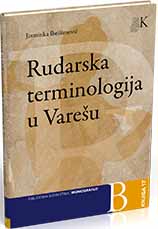
Vareš is a small town near Sarajevo, a synonym for a mining town and a hard way to make one’s living. I started the collection and lexicographic processing of mining terminology from the Vareš region with the goal to„save“ from oblivion the phrases which are going out of use, since mining production in Vareš has stopped entirely.The introductory part of the paper is concerned with the relation be-tween lexis and terminology, with the historical background of mining in Bosnia and Herzegovina and Vareš, as well as the influence of the Saxon miners on mining in Vareš. That part of the paper traces the evolution of mining and with it the evolution of mining phrases, during a specific time period. The main part deals with the influence of ijekavskošćakavski dialect (Eastern Bosnian dialect) on the speech of Vareš miners. The descrip-tions are given of specific aspects of mining terminology at the phonetical-phonological, morphological and lexical levels; there were no significant discrepancies observed at the syntactic level.At the phonetical-phonological level there is an observed tendency to reduce two affricate pairs to jus tone, as well as hyperjekavisation, and tendencies contrary to hyperjekavisation, reduction of consonant clusters, assimilation of vocals, omission of assibilation, etc. At the morphological level,most distinctive qualities werefound in nouns; there were no significant peculiarities to be found in adjectives, verbs and other parts of speech. At the lexical level, a great number of synonyms were found among the collected phrases. The evolution of the mining terminology can best be traced precisely at the lexical level. Certain old phrases are also being used with new meanings.A separate part of the paper is a dictionary with 945 entries. All of them have been thematically classified. Based on research, it was concluded that there is a relatively small number of phrases relating exclusively to mining among the phrases described, and that there are many more generally used phrases and phrases which are used both in mining and other economic activities.
More...
This work deals with Received Pronunciation (RP), the prestige accent in England and other parts of Great Britain. It examines the perception of this accent by English and Czech respondents. It also analyses the roles RP fulfils in the two environments. The first part provides both synchronic and diachronic theoretical frame that is inspired by a wealth of both up-to-date as well as historical literature. Furthermore, it analyses RP by means of sociolinguistic notions, especially those related to language prescription and standardisation. The practical part consists of a survey that has been made by means of a website with 18 recordings and an accompanying questionnaire. The recordings have been evaluated by 20 Czech and 20 English respondents. The survey also attempts to establish the sociolinguistic categories most closely linked with the mental construct of RP.
More...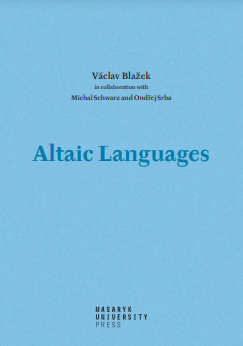
The present monograph represents a manual, summarizing state-of-the-art of the Altaic diachronic linguistics, concentrates on development of linguistic research in the Turkic, Mongolic, Tungusic, Koreanic and Japonic branches, first descriptive, later comparative. A special attention is payed to history of both the partial and general models of classifications, overview of etymologies of the main ethno- and choronyms and process of establishing the phonetic correspondences within and among the individual branches. For illustration of the common heritage the nominal and pronominal case systems were chosen as examples of the stables subsystems. In details is mapped a history of etymological analysis of the Altaic numerals, including new solutions. The monograph is for linguists, historians, anthropologists and archaeologists interested in Siberia, Central Asia and the Far East.
More...
These days English is definitely the lingua franca of the world. How come? When did it start? Is it good to have one common language vs. national languages? Why English and not, say, Esperanto or German? Will English sooner or later substitute all languages? Will English deteriorate if there are so many different speakers? Will English be developed into two separate languages, i.e. the English spoken by the natives and the English spoken by the rest of the world? Can we already speak about a European English? Is G. B. Shaw right saying: “We (the British and Americans) are two countries separated by a common language”? So, how many English do we have then? Do we have to “fight” against English dominance or do we have to accept it? These are very difficult and at the same time very significant questions nowadays. Plurilingualism is emphasized all the time. In the European Union, every single document has to be translated into the languages of the member states, but still English is the prevailing language. Even in countries like Hungary almost all applications have to be handed in English as well. Can we consider it as the sign of getting more and more international and at the same time losing our national identity? If the national language is relegated to the background, the same will happen to the national identity and this can lead to a dull unified world which is absolutely against the “more than English” idea. The presentation tries to find answers to the above questions and takes a stand for multilingualism (as the saying goes: “You are as many men as many languages you speak.”), but it does not promise to find the philosophers’ stone.
More...
The subject of the monograph are inscriptions on Polish and Czech public signs perceived as a communicative and textual phenomenon connected with the place of their functioning, their sender-receiver relations and the functions they perform. The author focuses on the issues of the status of public signage and its stylistic and communicative determinants. He draws attention to the affinity of public signs with both administrative and colloquial texts, due to the different degree of stylistic awareness of their authors. The publication is mainly addressed to linguists interested in communicative and textological issues in contemporary Polish and Czech.
More...
The paper provides an overview of linguistic features of business discourse (sourcing and employment), in which a communicative center is presented as an interview of a recruiter with a job candidate. Terms, professional vocabulary and barbarisms from various institutional spheres serve as discourse markers of speech strategies of the recruiter (interviewer) and the job candidate (interviewee), which is determined by extralinguistic features and interprofessional nature of the discourse. Recruiters use the terms primarily to assess professional competence of job candidates while job candidates demonstrate a command of professional vocabulary for self-presentation with hidden self-promotion. The paper presents examples of four job interviews with job candidates from different career fields; the ratio of the number of terms is given. A distinguishing characteristics of the discourse under study is the active use of such a group of special vocabulary as professional terms including barbarisms mainly borrowed from other languages (predominantly, from English) and not yet fully assimilated in the Russian language. It is noted that the boundaries between terms and professional vocabulary, professional vocabulary and barbarisms are relatively flexible. The study reveals the reasons why communicants frequently gain advantage of such vocabulary; the fundamental role of extralinguistic factors is displayed.
More...
The publication contains compiled examples of linguistically correct feminine forms of positions, functions and professions found at the University of Silesia in Katowice. During the conceptual work, another facet of the modern world became apparent to us, namely the need to develop guidelines for the creation of forms that do not indicate gender. This resulted in extending our naming proposals to include a neutral aspect and calling the prepared dictionary “inclusive”.
More...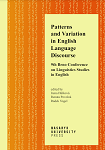
In order to explore the social effects of the differentiation between ‘native’ and ‘non-native’ varieties of English, the present qualitative study followed six Anglophone trainees in an EU institution in Luxembourg. Data were gathered in 2018/19 and 2020/21, combining on-site observations with longitudinal and one-off interviews. Research incited participants’ reflections on language practices at work and mapped their discursive positioning. Conclusions drawn from a sociolinguistic analysis of stances show that, despite the vagueness and lack of clearly definable linguistic characteristics for the category, being labelled as ‘native English’ brought distinct negative effects to the experience of the ‘native English’ participants. The contribution highlights the social constructivist character of the native/non-native dichotomy and draws attention to its adverse effects in the multilingual workplace and beyond.
More...